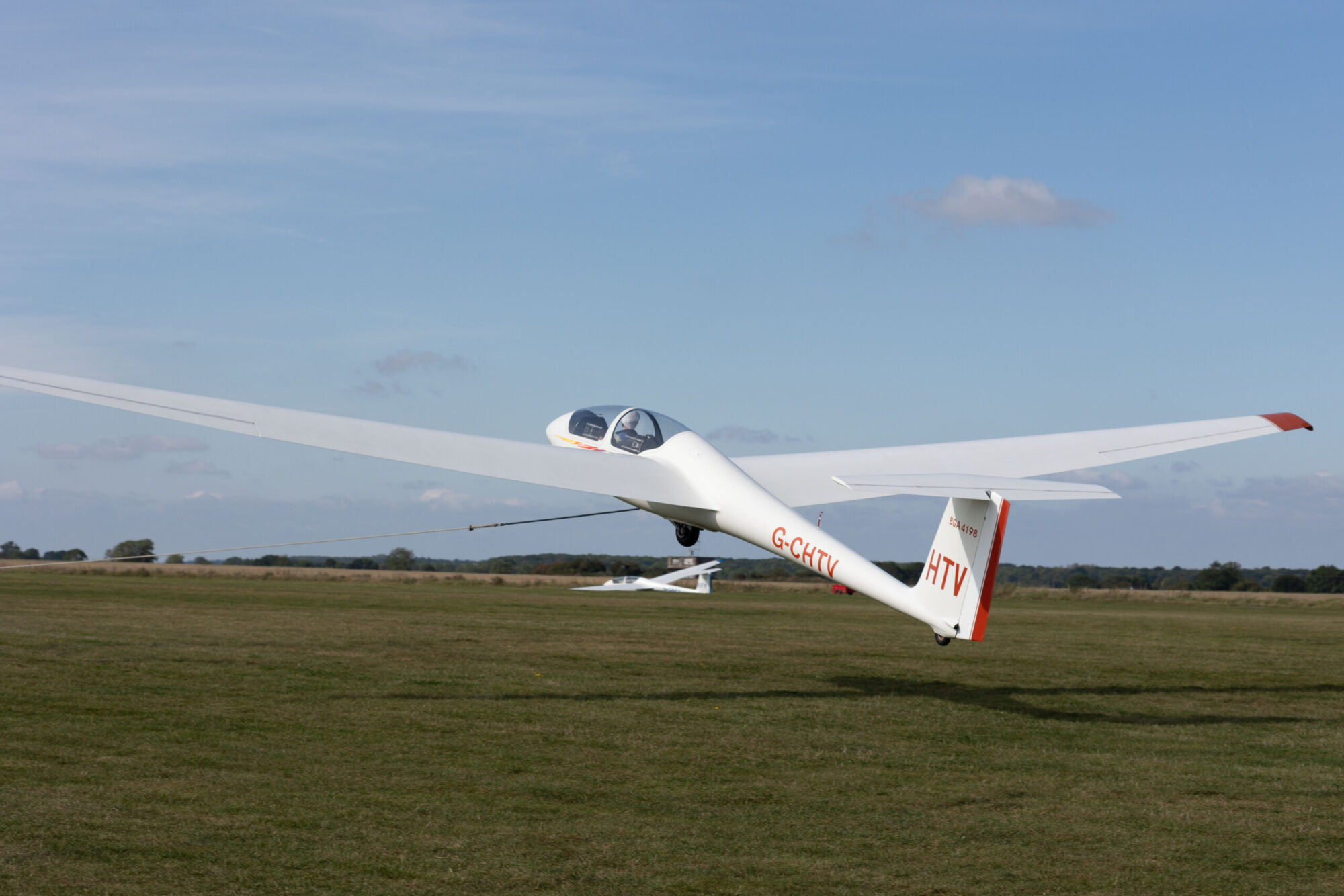Once a gilder is in the air it’s the thermal energy in the air and the pilots skill that allows for long and high flights, but to get into the air a glider requires a little help, and this comes in two common forms, a tow from another aircraft or being pulled into the air by a very long cable attached to a winch. CGC offers both these methods. Both are extremely safe, but have different advantages and drawbacks.
Winch Launch
Launch Height – 1,200 to 1,700 ft
Launch Time – 45 seconds
Winch launching is the most common launch method in the UK. It is fast, lower cost and quiet, and is how most people learn to fly. The glider is attached to a long cable, which is wound in by a powerful 8 litre V8 engine, which pulls the glider into the air gaining over 1000ft in around one minute. For early stages of learning to fly this gives a flight time of about 7 minutes, a perfect amount of time to practice launches, circuits and landing – something a new pilot can always use.
A winch launch is also very exhilarating, accelerating from 0-70mph in seconds, and then climbing at 45 degrees for a minute before releasing the cable and flying.
Even though the launch is lower than an aerotow launch, in the right hands on the right day it’s very possible to find a thermal and soar away for hours on end.
Aerotow Launch
Launch Height – 2,000 – 5,000 ft
Launch Time – 5 – 10 minutes
Aerotowing is the slower, gentler, more expensive way to get into the air, but it allows you to launch much higher. The glider is pulled into the air behind a powered aircraft, and can therefore be towed as high or as far as required. Aerotows are preferred for many introductory flights as it’s a very smooth launch but also for some training exercises that require extra height for safety.
For pilots flying cross country an aerotow offers the best chance to connect directly with higher thermals to save some time, on a day when they might expect to be airborne for many hours and cover hundreds of kilometers.
Launches between 2,000 – 3,000 ft typically suffice for training or soaring needs with higher launches of up to 5,000 ft only necessary for aerobatic training.



